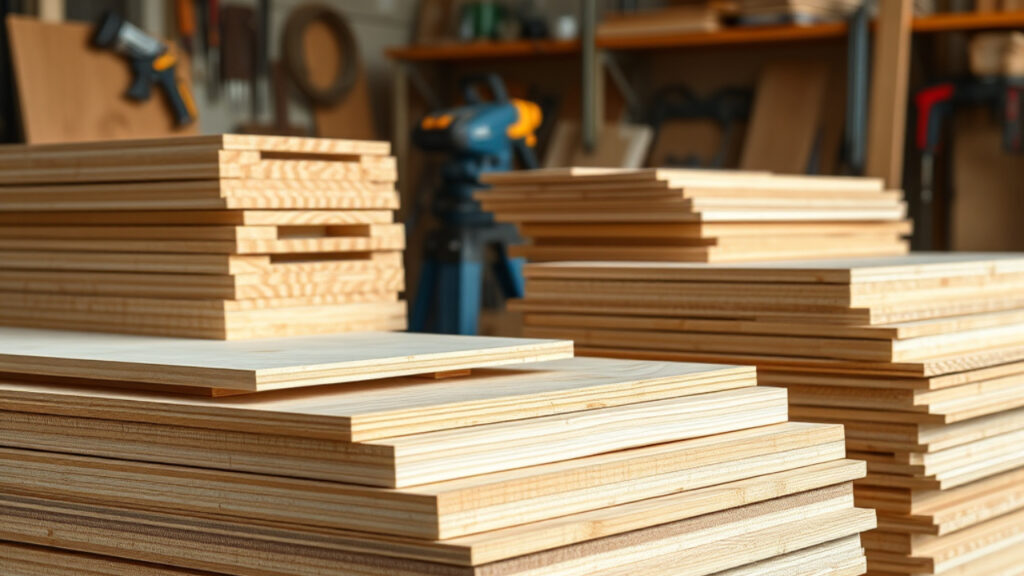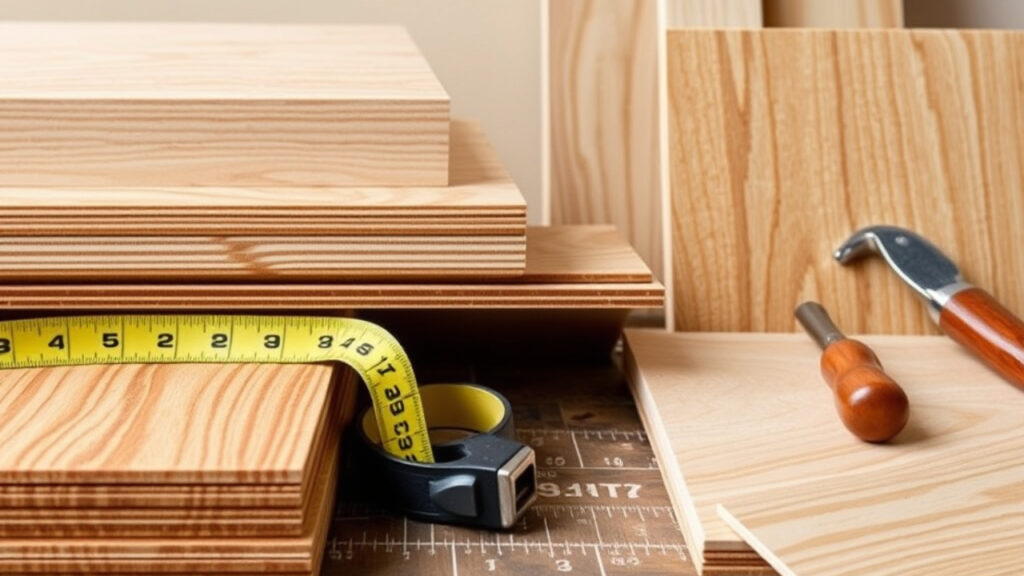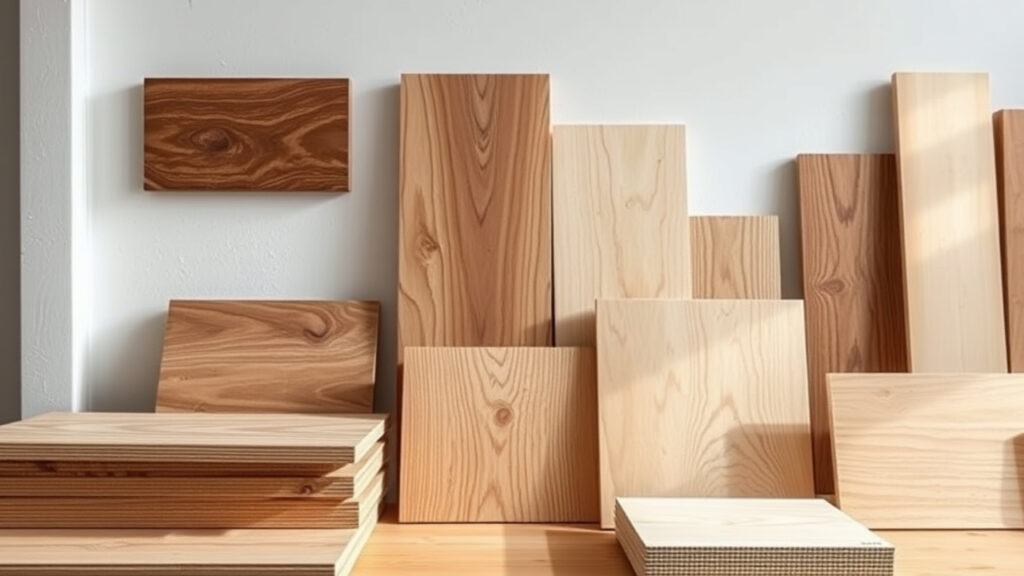The Ultimate Guide to Plywood: Everything You Need to Know About Mario Plywood
Table of Contents
- Introduction to Plywood
- The History and Evolution of Plywood
- What is Plywood? Understanding the Basics
- How is Plywood Made? The Manufacturing Process of Mario Plywood
- Types of Plywood and Their Uses
- Hardwood Plywood
- Softwood Plywood
- Marine Plywood
- Flexible Plywood
- Fire-Retardant Plywood
- Mario Plywood: A Leader in Quality Plywood Manufacturing
- Why Choose Mario Plywood? Features and Benefits
- Applications of Plywood in Different Industries
- Construction and Architecture
- Furniture and Interior Design
- Packaging and Transportation
- Plywood Grades and Standards: How to Choose the Right One
- Sustainability and Eco-Friendliness in Plywood Manufacturing
- The Role of Plywood in Modern Interior Design
- Comparing Plywood with Other Engineered Wood Products
- How to Maintain and Care for Plywood Products
- Common Plywood Myths and Misconceptions
- Future of Plywood: Trends and Innovations
- Frequently Asked Questions (FAQs)
- Conclusion
1. Introduction to Plywood
Plywood is one of the most versatile and widely used engineered wood products in the world. It is used in everything from home furniture to large-scale construction projects. Mario Plywood, a trusted name in the plywood manufacturing industry, offers high-quality plywood solutions for various applications.
In this comprehensive guide, we will explore the history, manufacturing process, types, applications, and benefits of plywood, with a special focus on Mario Plywood and its contributions to the industry.
2. The History and Evolution of Plywood
Plywood has been around for centuries, with evidence of laminated wood products dating back to ancient Egypt and Greece. However, the modern plywood industry began in the early 20th century with the development of new adhesives and manufacturing techniques.
The introduction of industrial plywood manufacturing revolutionized the construction and furniture industries, making wood products more durable, cost-effective, and adaptable. Today, brands like Mario Plywood continue to innovate and improve upon traditional plywood production methods.
3. What is Plywood? Understanding the Basics
Plywood is an engineered wood product made by gluing together multiple layers of thin wood veneers. The grain direction of each layer is alternated to enhance the strength and durability of the final product.
Key Characteristics of Plywood:
- Strong and durable
- Lightweight compared to solid wood
- Resistant to warping and cracking
- Available in various thicknesses and grades
Plywood is used in countless applications, from home interiors to large-scale commercial projects.
4. How is Plywood Made? The Manufacturing Process of Mario Plywood
Mario Plywood follows a stringent manufacturing process to ensure the highest quality standards.
Step-by-Step Manufacturing Process:
- Log Selection and Preparation: High-quality timber logs are selected and debarked.
- Veneer Peeling: The logs are peeled into thin sheets using rotary cutters.
- Drying Process: The veneers are dried to remove excess moisture.
- Layer Arrangement: Veneers are stacked with alternating grain directions.
- Adhesive Application: High-quality adhesives are applied between layers.
- Pressing: The stacked veneers are subjected to heat and pressure to bond them together.
- Cutting and Finishing: The plywood sheets are trimmed and finished to meet size specifications.
- Quality Control: Each sheet undergoes rigorous testing before packaging and distribution.
Mario Plywood ensures that every sheet produced meets industry standards for strength, durability, and finish.
5. Types of Plywood and Their Uses
There are various types of plywood, each designed for specific applications.
Hardwood Plywood
- Made from high-quality hardwood species like teak and birch.
- Used in furniture making and high-end interiors.
Softwood Plywood
- Made from softwood species such as pine and cedar.
- Commonly used in construction and packaging.
Marine Plywood
- Highly water-resistant and durable.
- Used in boat building and outdoor applications.
Flexible Plywood
- Designed for applications requiring curved surfaces.
- Used in creative furniture designs.
Fire-Retardant Plywood
- Treated to resist fire hazards.
- Ideal for public buildings and fire-sensitive areas.
6. Mario Plywood: A Leader in Quality Plywood Manufacturing
Mario Plywood has built a reputation for producing high-quality, durable, and sustainable plywood products. The company uses advanced manufacturing techniques, premium raw materials, and stringent quality control measures to ensure customer satisfaction.
7. Why Choose Mario Plywood? Features and Benefits
- Superior Strength & Durability
- Water and Termite Resistant
- Eco-Friendly and Sustainable Practices
- Customizable Options for Various Applications
Mario Plywood is trusted by architects, builders, and furniture makers across industries.
8. Applications of Plywood in Different Industries
Construction and Architecture
- Wall paneling and flooring
- Roofing and partitions
Furniture and Interior Design
- Kitchen cabinets and wardrobes
- Office and home furniture
Packaging and Transportation
- Wooden crates and boxes
- Vehicle interiors
9. Plywood Grades and Standards: How to Choose the Right One
Plywood is classified into different grades based on quality and intended use.
- BWP (Boiling Water Proof) Plywood – Ideal for wet areas.
- MR (Moisture Resistant) Plywood – Suitable for dry areas.
- Commercial Plywood – Best for indoor applications.
Mario Plywood offers a wide range of options for different needs.
10. Sustainability and Eco-Friendliness in Plywood Manufacturing
Mario Plywood follows sustainable practices, including:
- Sourcing wood from certified forests.
- Using eco-friendly adhesives and finishes.
- Reducing waste through efficient manufacturing processes.
11. The Role of Plywood in Modern Interior Design
Plywood is widely used in modern interior design for its versatility, affordability, and aesthetic appeal.
12. Comparing Plywood with Other Engineered Wood Products
- Plywood vs. MDF – Plywood is stronger and more durable.
- Plywood vs. Particle Board – Plywood is more resistant to moisture and warping.
13. How to Maintain and Care for Plywood Products
- Avoid exposure to excessive moisture.
- Use protective coatings for long-lasting durability.
- Clean regularly with a damp cloth.
14. Common Plywood Myths and Misconceptions
- Myth: Plywood is not as strong as solid wood.
- Fact: Plywood is engineered for superior strength.
15. Future of Plywood: Trends and Innovations
- Sustainable and recycled plywood.
- Smart plywood with enhanced durability.
- 3D-printed plywood for custom applications.
16. Frequently Asked Questions (FAQs)
Q1: What makes Mario Plywood different from other brands?
Mario Plywood is known for its premium quality, durability, and eco-friendly manufacturing.
Q2: Is Mario Plywood waterproof?
Yes, Mario Plywood offers water-resistant and marine-grade plywood options.
Q3: Can plywood be used for outdoor applications?
Yes, marine and weatherproof plywood are ideal for outdoor use.
17. Conclusion
Mario Plywood continues to be a trusted leader in the plywood manufacturing industry. Whether for home interiors, commercial projects, or industrial applications, Mario Plywood delivers top-tier quality, sustainability, and innovation.



